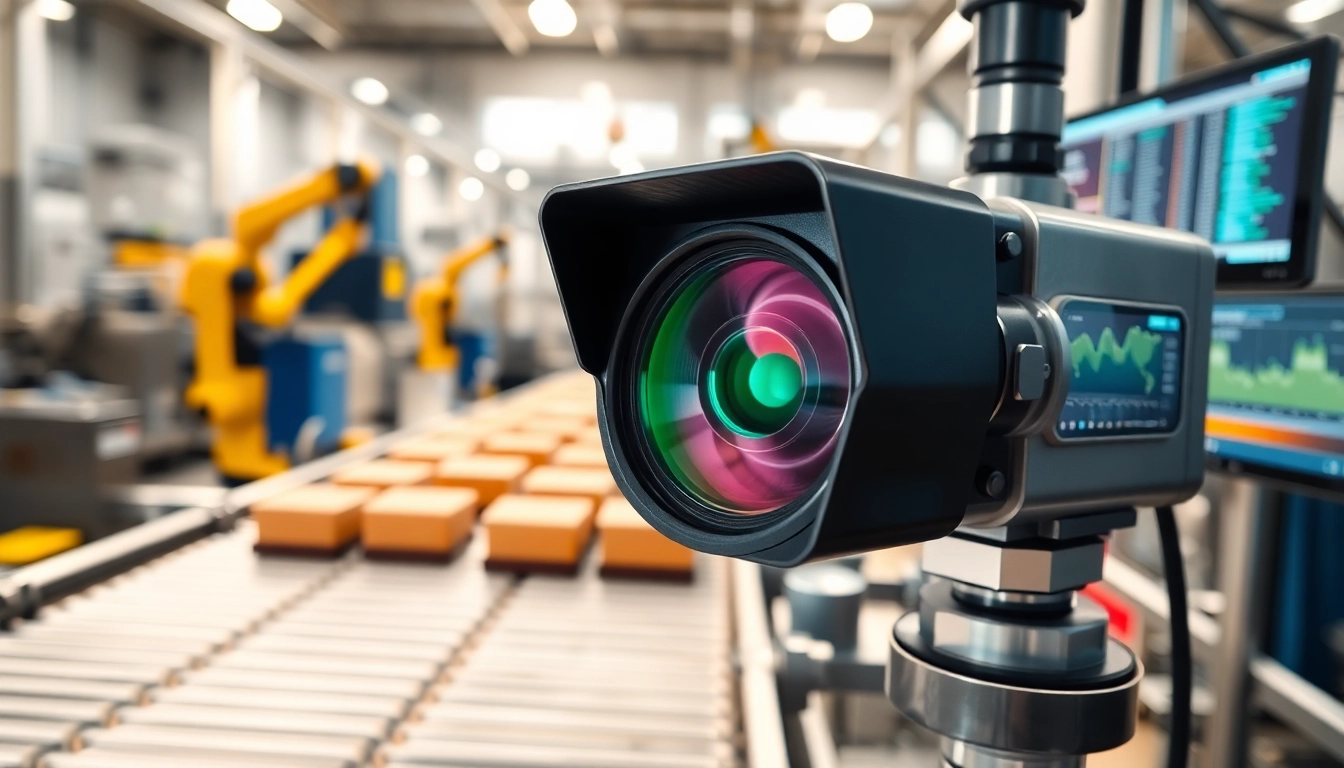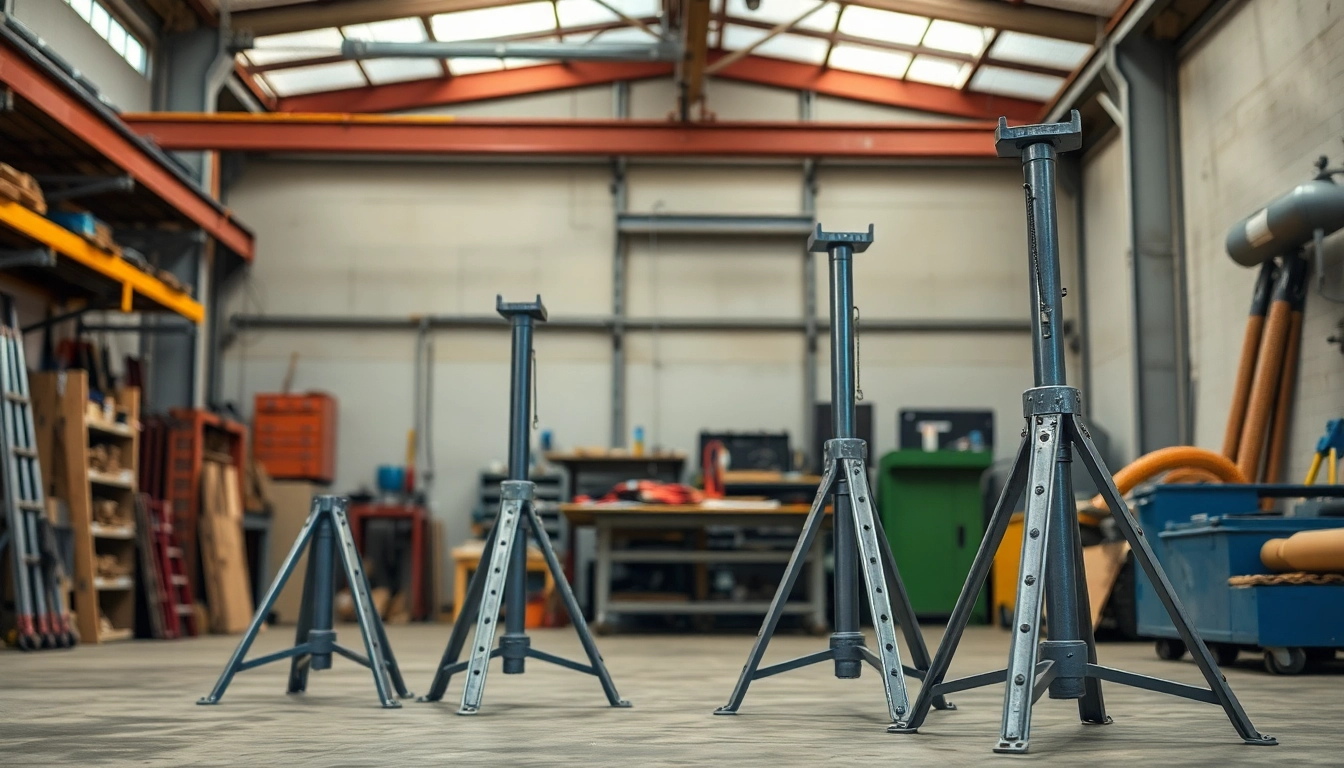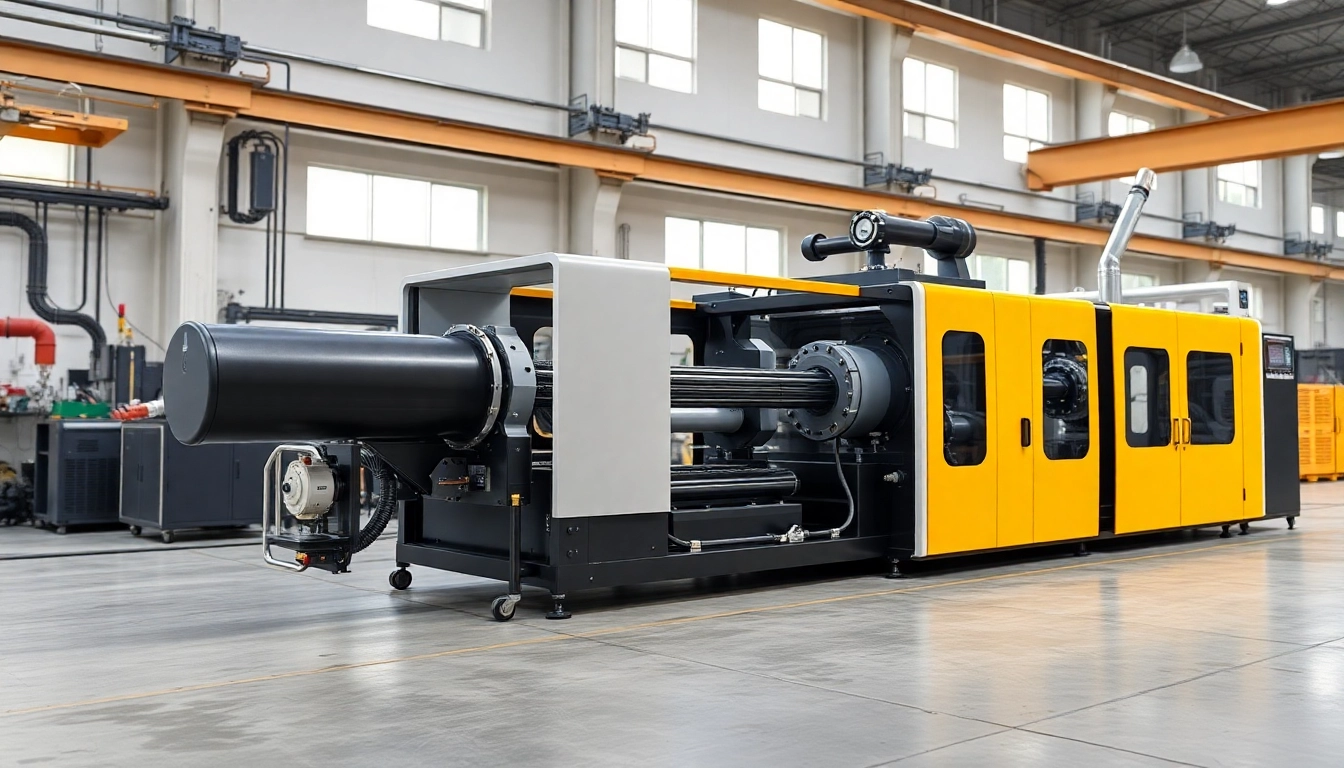Introduction to Machine Vision
In an age where automation is not just a trend but an industry standard, machine vision has become an integral part of industrial automation systems. This technology empowers machines to interpret visual information, paving the way for enhanced efficiency, accuracy, and productivity. From manufacturing processes to quality control and robotics, machine vision is crafting a landscape where human involvement is minimized yet outcomes are vastly improved. Understanding machine vision is crucial for businesses aiming to stay competitive in today’s fast-paced technological environment.
What is Machine Vision?
Machine vision is defined as the capability of devices to see, process, and interpret visual information. Utilizing cameras, image sensors, and intelligent software algorithms, machine vision systems are designed to facilitate various tasks, from inspection and measurement to recognition and navigation. The fundamental objective of this technology is to automate visual tasks traditionally executed by humans, resulting in increased speed and precision.
Key Components of Machine Vision Systems
Machine vision systems are comprised of several key components:
- Cameras: These serve as the eyes of the system. They capture images and video in real-time, which are then processed by the machine vision software.
- Lighting: Proper illumination is crucial for image quality. Lighting solutions, including LED, fluorescent, and laser options, help enhance contrasts and details.
- Image Processing Software: This software analyzes the captured images, applying algorithms to detect defects, measure features, or classify objects.
- Computing Hardware: This includes processors and memory systems that handle the substantial data processed by cameras and software.
- Output Devices: Depending on the application, these can include monitors, printers, or interfaces that trigger actions based on the analysis.
Applications Across Industries
Machine vision is applied in various industries, including:
- Manufacturing: Quality control is a primary application, where systems inspect parts for defects during the production process.
- Logistics: Automated sorting and item identification enhance warehouse efficiency.
- Aerospace: Safety-critical inspections make use of this technology for verifying components and assembly integrity.
- Automotive: Vision systems facilitate tasks such as safety inspections, automatic steering, and parking aids in vehicles.
- Healthcare: Machine vision is utilized in medical imaging and diagnostics, providing support for visual assessments and analysis.
How Machine Vision Works
Image Acquisition Techniques
The basis of machine vision systems lies in image acquisition, which consists of capturing the visual information needed for analysis. This can be achieved through various techniques:
- 2D Imaging: The most common method where two-dimensional images are captured and analyzed for features or defects.
- 3D Imaging: This advanced technique uses stereo cameras or structured light to measure the depth and volume of objects, essential for applications requiring precise dimensional measurements.
- Thermal Imaging: Often employed in safety and maintenance sectors, thermal cameras detect heat patterns in machinery, identifying overheating components.
Processing Techniques in Machine Vision
Once images are captured, they undergo processing through complex algorithms:
- Image Enhancement: Techniques like filtering and contrast adjustment are applied to improve image clarity and details.
- Segmentation: This involves dividing images into meaningful segments to facilitate analysis, typically by separating objects from the background.
- Pattern Recognition: Identifying specific features or patterns allows for tasks such as optical character recognition or barcode reading.
- Machine Learning: Some systems apply AI to improve accuracy by learning from large data sets, adapting as they encounter new images/objects.
Data Analysis and Interpretation
After processing images, machine vision employs data analysis to interpret the output. Usually, this analysis involves:
- Defect Detection: Analyzing images pixel-by-pixel to identify any anomalies or defects that deviate from the expected characteristics.
- Measurement: Calculating dimensions and angles, ensuring components meet precise specifications.
- Classification: Sorting items based on perceived features, enabling automated decision-making processes.
Applications of Machine Vision
Quality Control and Inspection
Quality control remains one of the foremost applications of machine vision, where it assists in detecting manufacturing defects in real time. Annotations and metrics are stored for quality reviews, enabling organizations to maintain high standards and meet regulatory requirements. For instance, machine vision systems might be employed in the textile industry to inspect fabric for flaws before it reaches production lines.
Automated Sorting and Packaging
The logistics and packaging industries leverage machine vision to enhance sorting accuracy. Vision systems can quickly identify products based on shape, size, and labeling, ensuring that they are dispatched to the correct locations. This is exemplified in automated warehouses, where cameras and processing systems work together to streamline operations, eliminate bottlenecks, and reduce human error.
Machine Vision in Robotics
Integrating machine vision into robotic systems creates smarter, more autonomous robots, which can perform complex tasks with minimal supervision. For example, robotic arms equipped with vision technology can identify components on an assembly line, make adjustments in real time, and complete procedures like packing or welding with precision. Machine vision-equipped robots are increasingly used in hazardous environments where human presence is limited.
Trends Shaping Machine Vision
The Impact of AI on Machine Vision
Artificial Intelligence (AI) is revolutionizing machine vision by improving efficiency and accuracy. AI algorithms can enhance the processing capabilities of vision systems, allowing for adaptive learning based on past data and trends. As a result, production settings can achieve greater operational efficiency and reduced waste, setting new standards in industrial environments.
Emerging Technologies in Machine Vision
The future of machine vision is characterized by rapid advancements in technology. Notably:
- Deep Learning: Utilizes neural networks to enhance image recognition capabilities, especially in complex scenarios where traditional algorithms may fall short.
- Embedded Vision: Incorporates vision capabilities directly into devices, leading to more compact systems with reduced costs, ideal for applications like mobile devices and drone technology.
- Augmented Reality (AR): Integrates virtual information with real-world data to support human operators during inspection and maintenance procedures, improving productivity in complex environments.
Future Challenges and Opportunities
As machine vision technology continues to evolve, organizations will face several challenges, including:
- Integration Complexity: As systems become more sophisticated, integrating them into existing operations without interrupting workflows can be challenging.
- Data Security: Protecting the information processed by machine vision systems, especially in sensitive environments, remains paramount.
- Cost of Implementation: Despite the long-term savings, the initial investment in machine vision systems can be substantial, posing a barrier for small and medium businesses.
Implementing Machine Vision Solutions
Steps for Successful Implementation
Implementing a machine vision system requires a structured approach:
- Needs Assessment: Determine the specific requirements for the machine vision system, considering factors like inspection tasks, environment, and existing processes.
- System Design: Develop a system design that integrates all necessary components, including cameras, software, and hardware.
- Testing: Conduct thorough testing to ensure the system meets performance expectations and can adapt to the environment it operates in.
- Training: Train staff on system operations, from basic functions to troubleshooting and maintenance.
Best Practices for Machine Vision Systems
To achieve optimal results from machine vision systems, adhere to these best practices:
- Environment Control: Ensure that lighting and ambient conditions are consistent, as these factors greatly affect image quality.
- Regular Maintenance: Schedule routine checks and technology updates to keep systems running smoothly and efficiently.
- Data Monitoring: Utilize analytics to assess system performance, adapting configurations based on data insights for continuous improvement.
Measuring Success and ROI
Determining the success of machine vision systems involves measuring various KPIs:
- Accuracy Rates: Assess the precision of the machine vision systems in identifying defects or certifying product quality.
- Reduction in Waste: Evaluate how effectively the system has minimized defective outputs, thereby increasing operational efficiency.
- Cost Savings: Analyze the financial impact of reduced labor costs and increased throughput against the initial investment.
In conclusion, machine vision stands as a vital technology reshaping industries through increased efficiency and accuracy. By enhancing processes across various sectors, it not only boosts productivity but also opens up opportunities for innovation and growth. Keeping abreast of trends and best practices will ensure that organizations harness the full potential of machine vision technologies now and in the future.



